ASUS RS720A-E11-RS24U Internal Hardware Overview
Inside the system we get four fans, then the CPUs and memory, followed by the I/O portion of the chassis.
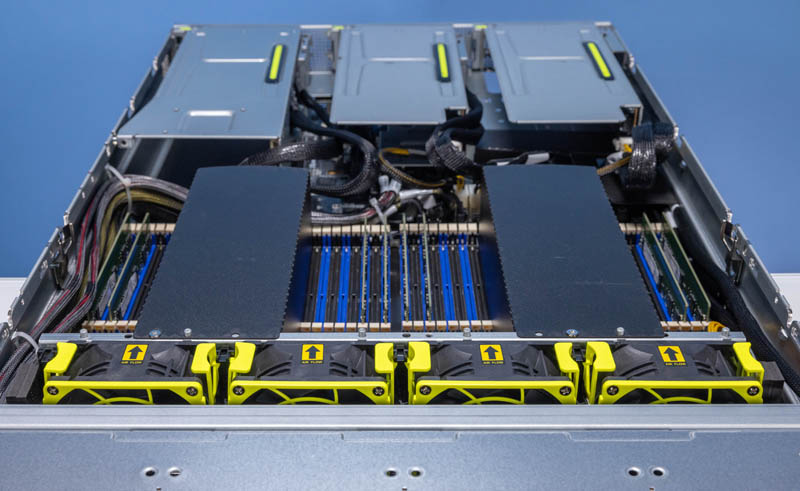
One can see relatively simple airflow guides here. We generally prefer the hard-molded plastic version of these. The flexible versions were functional and attached fairly easily. This area is also very different than the GPU version that was focused on ducting air to the GPUs in the rear of the unit. It seems like ASUS is using a standard design here that can be applied to either type of server.
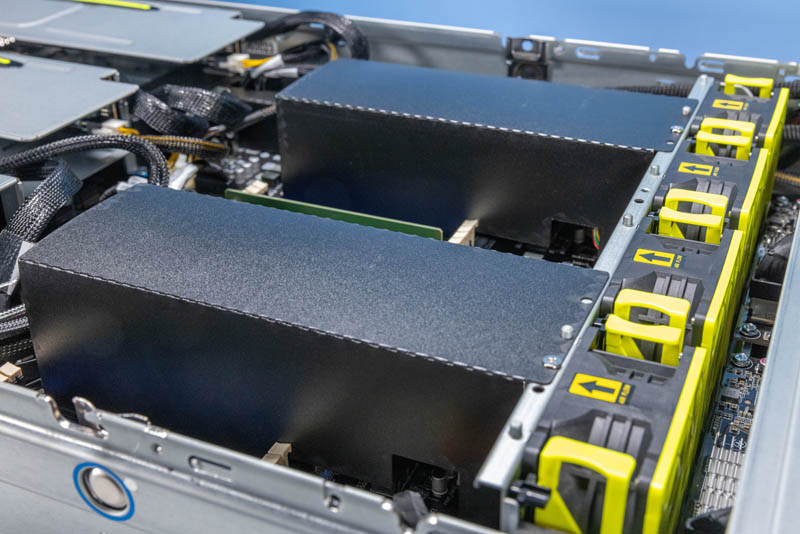
A small but fun note in the above photo is that the chassis cover latches are on the side of the chassis in the blue circle outline. Many servers have them on top, ASUS puts them on the side.
The fan modules in this one are Delta units. ASUS has them in hot-swappable frames. Most of the user touch points are in the lime green color in this chassis instead of the blue shown above. We hope ASUS expands this color coding.
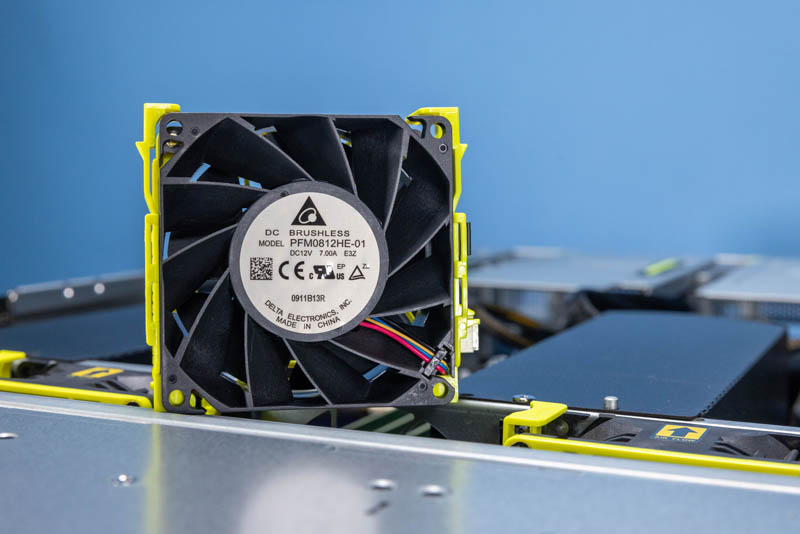
The fans attach to the front of the motherboard. Interestingly enough, here, ASUS is not using just a standard 4-pin PWM fan header. The server is also not routing cables through this section of the chassis.
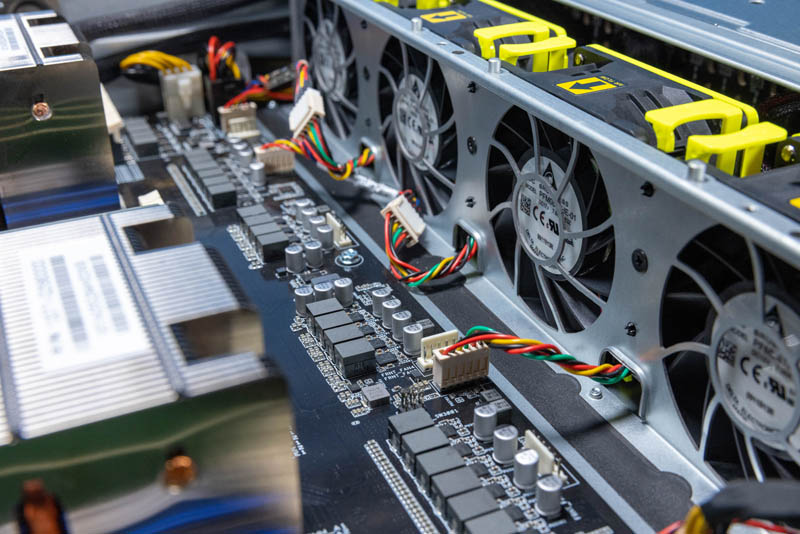
In terms of processors, we get two AMD EPYC 7003 (or 7002 series) processors in this chassis. The maximum TDP is 280W, and we have tested this system with the AMD EPYC 7763 processors.
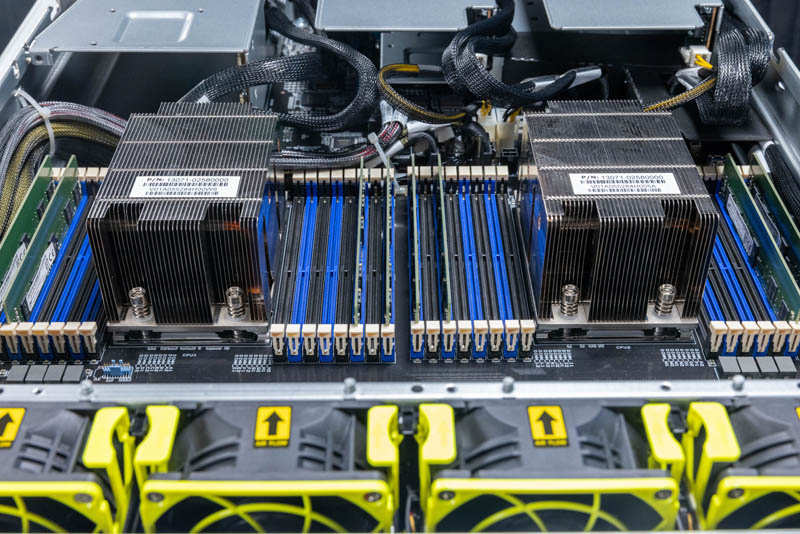
Each CPU gets eight memory channels and 2 DIMMs per channel. Since this is still a DDR4 platform with PCIe Gen4, this is a significantly lower-cost platform than the new DDR5 / PCIe Gen5 generation that will debut with AMD EPYC Genoa (we have already done Hands-on Benchmarking with Intel Sapphire Rapids Xeon Accelerators.)
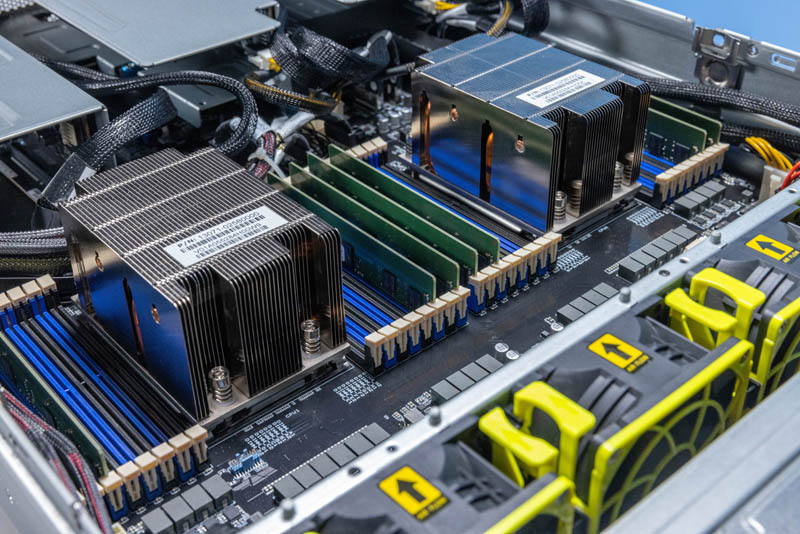
Behind the CPUs, we get many cabled connections and cable bundles to the front of the chassis and also to provide PCIe lanes to risers.
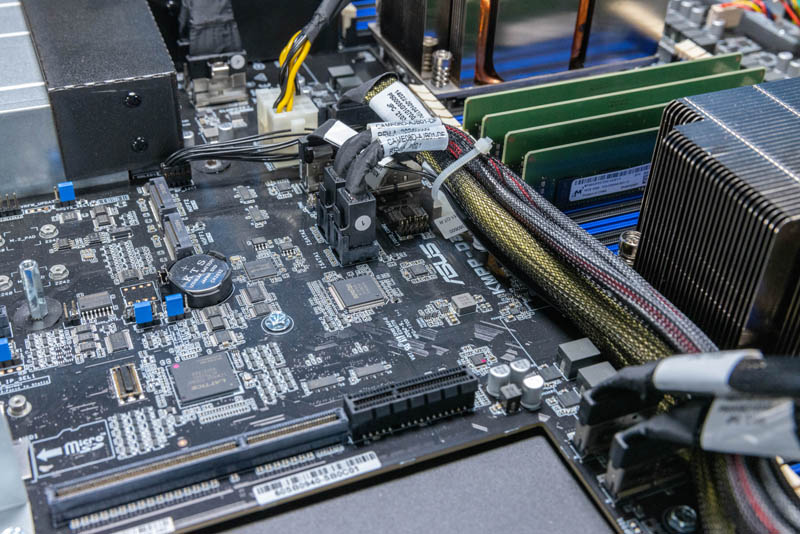
Onboard, there are dual M.2 NVMe SSD slots. These are generally going to be used for boot SSDs, but also many may opt for front SATA SSDs in this chassis since those are options as well.
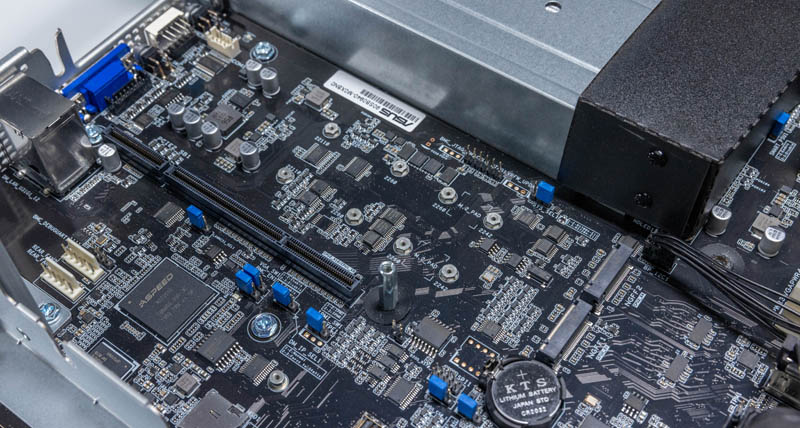
Next, we are going to get to the risers, and they are plentiful, so we are going to have an entire section dedicated to them.

Next, we are going to get to the risers, and they are plentiful, so we are going to have an entire section dedicated to them.
ASUS RS720A-E11-RS24U Riser Extravaganza
There are so many risers in this system that it is quite fun to see. Here is the list and what can be done with each.
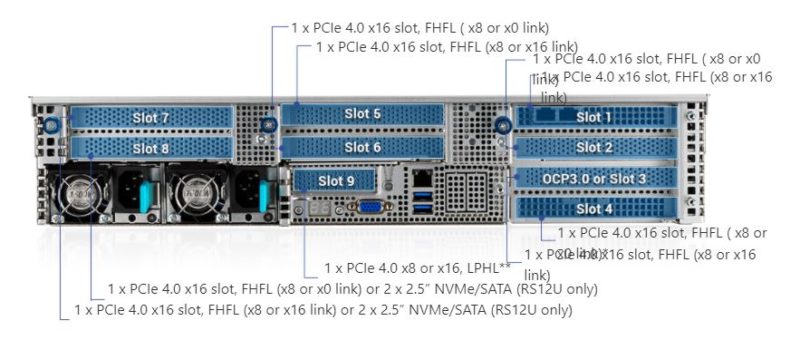
As you can see, many of the risers are x16 or split the x16 to two x8 connections depending on how they are populated. Here is the riser with four x16 slots that one can configure in different manners.
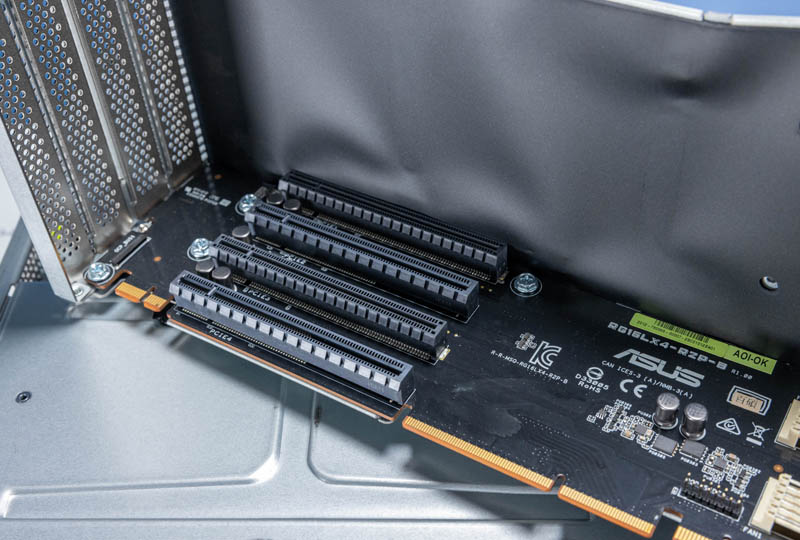
One small, but nice feature, is that ASUS has a tool-less expansion slot system so there is no need to screw cards into the risers. A little bar simply swings into place to keep everything installed before the riser is installed in the system.
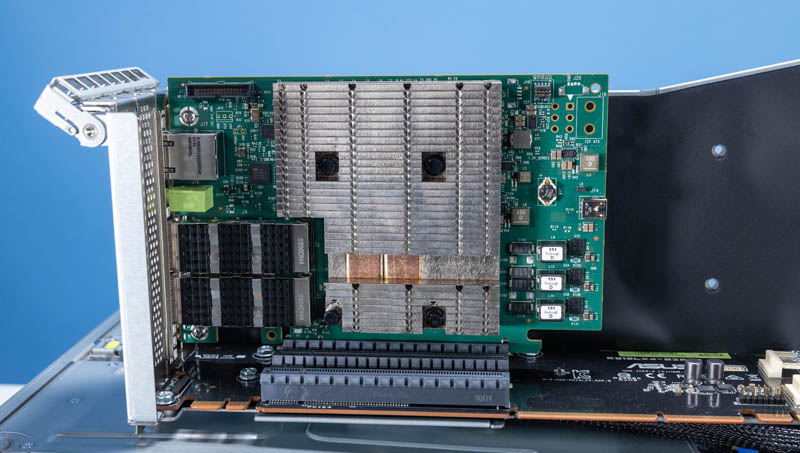
ASUS built these risers with additional fan headers, but we are not using them.
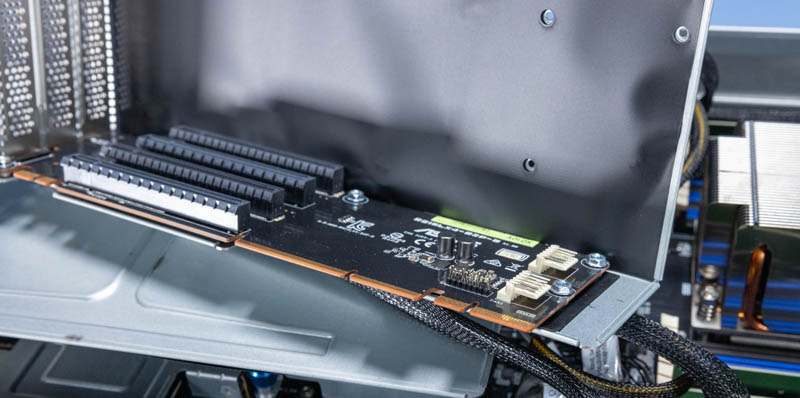
The center riser has two slots, but the low profile slot is located under this riser.
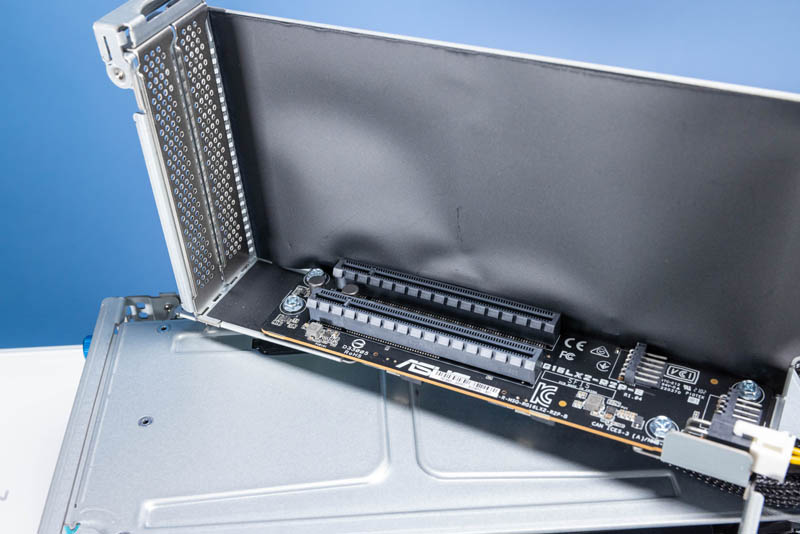
That low-profile slot will mostly be used for networking, but it is joined to the optional networking module slot. Here we can see the dual 10Gbase-T module.
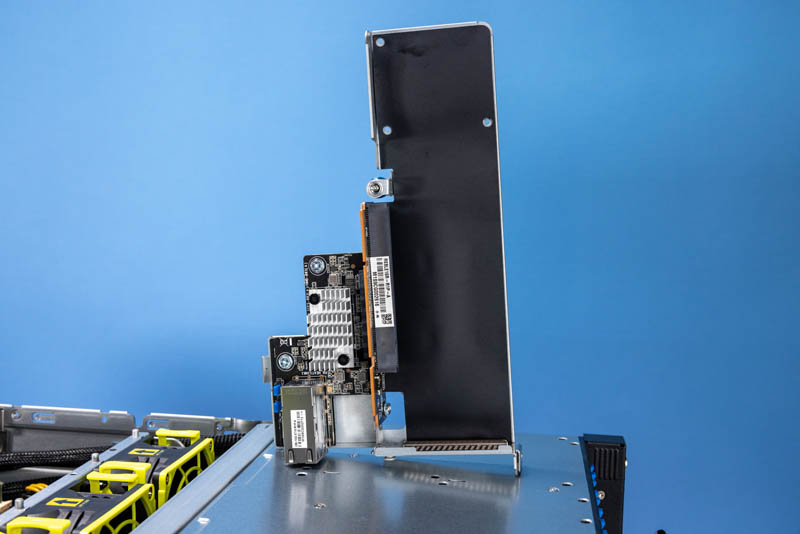
One area that was not ideal was that the riser above this one needed to be removed to gain access to this. Both risers need to be removed to get to the M.2 slots on the motherboard.
Here is the riser from over the power supply that appears to be the same model as the middle riser.
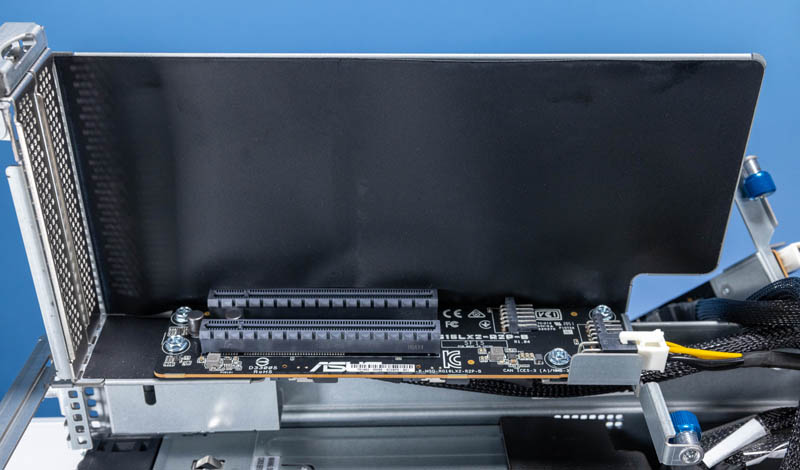
Something interesting here is that because ASUS is using a cabled connection, it can have all three blocks of full-height risers oriented the same way in the system. There are not some risers with cards facing down and others with them facing up, a common sight in servers.
Next, we are going to look at the management of the system.



